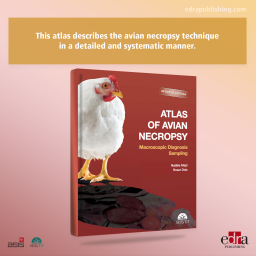The most updated information on avian influenza with a practical approach. The authors review the aetiology, clinical signs, diagnosis, and control of avian influenza viruses. It also includes numerous graphic resources to make the contents more understandable to readers
Author:
HELENA LAGE FERREIRA
Assistant Professor at University of São Paulo Brazil State University (UNESP, Brazil).
TAIANA PEREIRA DA COSTA
Postdoctoral fellowship on Avian Virology and Pathology (Autonomous University of Barcelona, Spain).
CINTIA HIROMI OKINO
Currently working at the Avian Virology Laboratory, Embrapa Swine and Poultry, a Brazilian Agricultural Research Corporation.
SHAMUS PATRICK KEELER
Postdoctoral research scholar at Washington University School of Medicine in St. Louis (MO, USA).
MUHAMMAD MUNIR
Fellow on Avian Innate Immunity and Host Genetic Diversity at The Pirbright Institute, UK.
Key Features:
➜ This handbook provides the most updated information on avian influenza (AI).
➜ Written by renowned experts in the field of diseases affecting the poultry industry,
including avian influenza.
➜ Practical and visual approach presenting numerous graphic resources.
Table of Contents:
1. Introduction
History and reports of influenza viruses
Aetiology
Hosts
Notification to OIE
2. Classification of AIV
Viral taxonomy
AI subtypes
AI nomenclature
Species specific influenza A viruses
AIV pathotypes
Antigenic variation of strains-drift and shift
Additional AIV classifications
3. Avian immune responses
Innate immune responses
Adaptive immune response
Cell-mediated immunity (CMI)
Antibody-mediated immunity
Cytokine storm
Evasion of immune response by influenza viruses
4. Pathogenesis
Shedding
Transmission
Molecular pathogenesis
Receptor binding specificity
Host susceptibility
5. Clinical signs and pathology
6. Sampling and diagnosis
Specimen sampling
Diagnostic methods
Virus identification
Molecular methods
Assessment of pathogenicity
Immunohistochemistry (IHC) and
immunofluorescence (IFIC)
Serological methods
7. Prevention and control
Prevention and control of AI outbreaks
Education
Biosecurity
Diagnosis
Surveillance
Vaccination
Transfer of passive immunity in birds
Eradication of AI
8. References












